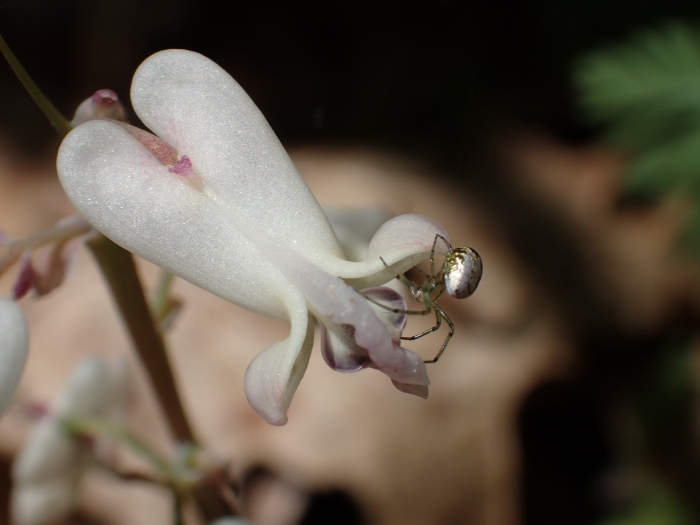Squirrel Corn
(Dicentra canadensis)
Squirrel Corn (Dicentra canadensis)
/
/

Evan M. Raskin
CC BY 4.0
Image By:
Evan M. Raskin
Recorded By:
Copyright:
CC BY 4.0
Copyright Notice:
Photo by: Evan M. Raskin | License Type: CC BY 4.0 | License URL: http://creativecommons.org/licenses/by/4.0/ | Rights Holder: Evan M. Raskin | Publisher: iNaturalist | Date Created: 2021-04-26T14:15:13-07:00 |













































Estimated Native Range
Summary
Dicentra canadensis, commonly known as Squirrel Corn, is a semi-deciduous perennial herb native to rich, moist deciduous woodlands and forest floors in the Eastern United States and Ontario. It typically grows to a height and width of 0.7-1 feet (0.2-0.3 meters). Squirrel Corn is notable for its delicate, finely dissected blue-green foliage and its distinctive white, heart-shaped flowers with a hint of pink, which bloom in early to mid-spring. The flowers are not only fragrant but also quite showy, attracting early-season pollinators. The plant’s common name derives from the small, yellow, clustered bulblets that resemble kernels of corn. These tubers are an important survival mechanism, allowing the plant to re-emerge each spring.
In the garden, Squirrel Corn is valued for its early spring blooms and its ability to naturalize in favorable conditions. It is often used in shaded woodland gardens, rock gardens, and naturalized areas. This plant prefers part shade to full shade, consistent moisture, and well-drained, humus-rich soil. While it is relatively low-maintenance, it may require protection from late frosts that can damage early growth. Squirrel Corn is not typically associated with serious diseases or pests, but it can be susceptible to root rot in overly wet conditions. It is also important to note that this plant goes dormant in the summer, so plan companion plantings accordingly to avoid gaps in the garden.CC BY-SA 4.0
In the garden, Squirrel Corn is valued for its early spring blooms and its ability to naturalize in favorable conditions. It is often used in shaded woodland gardens, rock gardens, and naturalized areas. This plant prefers part shade to full shade, consistent moisture, and well-drained, humus-rich soil. While it is relatively low-maintenance, it may require protection from late frosts that can damage early growth. Squirrel Corn is not typically associated with serious diseases or pests, but it can be susceptible to root rot in overly wet conditions. It is also important to note that this plant goes dormant in the summer, so plan companion plantings accordingly to avoid gaps in the garden.CC BY-SA 4.0
Plant Description
- Plant Type: Herb
- Height: 0.7-1 feet
- Width: 0.7-1 feet
- Growth Rate: Moderate
- Flower Color: Pink, White
- Flowering Season: Spring
- Leaf Retention: Semi-Deciduous
Growth Requirements
- Sun: Part Shade
- Water: Medium
- Drainage: Slow, Medium
Common Uses
Bee Garden, Bird Garden, Butterfly Garden, Deer Resistant, Fragrant, Hummingbird Garden, Low Maintenance, Rabbit Resistant
Natural Habitat
Rich, moist deciduous woodlands and forest floors in the Eastern United States and Ontario
Other Names
Common Names: Turkey Corn, Squirrel-Corn, Wild Turkey-Pea, Colicweed, Ghost Corn, Lyre Flower, Dicentre Du Canada, Silverhjärta
Scientific Names: , Dicentra canadensis, Bicuculla canadensis, Dielytra canadensis, Corydalis canadensis, Bikukulla canadensis, Capnorchis canadensis,
GBIF Accepted Name: Dicentra canadensis (Goldie) Walp.